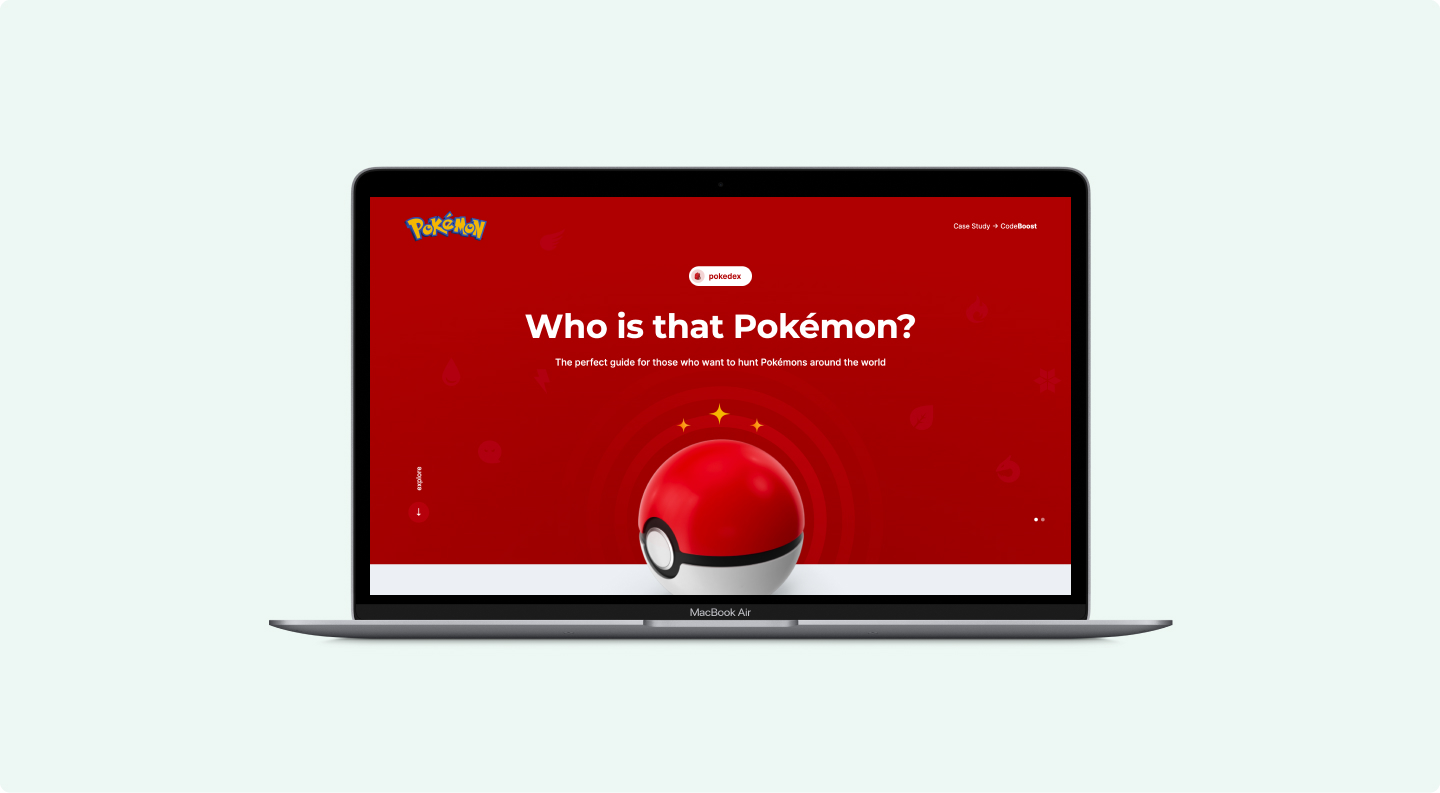
This project will be dedicated to the practice of everything learned in the Javascript module at the CodeBoost course. In addition to the well-crafted layout, the project itself will be based on API queries to bring up the information that the user interacts with.
Axios is a client HTTP based on promises for node.js and the browser. One of the many advantages of using Axios is that there is no need to convert the data to JSON because will be automatically converted.
Some of the JavaScript functions created were basically done to get the data from the API and others to generate the HTML code in JS, for example, the cards, all of them if you want to manage in a dynamic way getting the data from API you need to think about listing these cards in a dynamic way as well.
What I recommend you do is create a function to create this card in JS (using your HTML reference) and then create another function to list the data from the API, once you have this data you can implement it into the Card.
// CREATE CARD POKEMON (JS)
function createCardPokemon(code, type, nome, imagePok) {
// Card Element
let card = document.createElement('button');
card.classList = `card-pokemon js-open-details-pokemon ${type}`;
card.setAttribute('code-pokemon', code); // attribute for pokemon code (link to the modal)
areaPokemonsList.appendChild(card); // append all cards
// Div Image
let image = document.createElement('div'); // create any html element
image.classList = 'image'; // add class image
card.appendChild(image); // put in the card (button element)
let imageSrc = document.createElement('img');
imageSrc.setAttribute('src', imagePok); // set attribute to imagePok (parameter)
imageSrc.className = 'thumb-img';
image.appendChild(imageSrc);
// Div Info
let info = document.createElement('div');
info.classList = 'info';
card.appendChild(info);
// Div Text
let text = document.createElement('div');
text.classList = 'text';
info.appendChild(text);
let codeSpan = document.createElement('span');
codeSpan.textContent = (code < 10) ? `#00${code}` : (code < 100) ? `#0${code}` : `#${code}`; // condition to show #001 or #010 or #100
text.appendChild(codeSpan);
let pokemonName = document.createElement('h3');
pokemonName.innerText = `${capitalizeFirstLetter(nome)}`; // capital letter uppercase
text.appendChild(pokemonName);
// Div Icon
let icon = document.createElement('div');
icon.classList = 'icon';
info.appendChild(icon);
let typeImg = document.createElement('img');
typeImg.setAttribute('src', `img/icon-types/${type}.svg`); // does not exist in the API so we create same image name as the types to run through our images
icon.appendChild(typeImg);
}// LIST THE POKEMONS
function listingPokemons(urlApi) { // url from API
// 1 - Get all pokemons from the API (0 - 9)
// 2 - Pass results, next, count as parameter
// 3 - Go through the each pokemon API (array) to get the details from each pokemon
axios({
method: 'GET',
url: urlApi
})
.then((response) => { // succeed response will do the below config:
// all variables:
const countPokemons = document.getElementById('js-count-pokemons');
// results = all pokemons
// count = sum of all pokemons
// next = next pagination of pokemons (0 - 9)
const { results, next, count } = response.data; // simple way of running through the OBJECT instead of using always response.data.results
countPokemons.innerText = count; // innerText = count (all pokemons in the API)
// Array of results (pokemons)
results.forEach(pokemon => {
let urlApiDetails = pokemon.url; // get URL from each pokemon
axios({
method: 'GET',
url: `${urlApiDetails}` //string
})
.then((response) => {
const { name, id, sprites, types } = response.data;
// name = nome pokemon
// id = id pokemon
// sprites = image of pokemon
// types = tipo do pokemon
// Object to get only information I need
const infoCard = {
nome: name,
code: id,
image: sprites.other.dream_world.front_default, // path of the image
type: types[0].type.name // always first position
}
createCardPokemon(infoCard.code, infoCard.type, infoCard.nome, infoCard.image); // ** CALLING FUNCTION
// select all pokemons to open modal
const cardPokemon = document.querySelectorAll('.js-open-details-pokemon'); // class
cardPokemon.forEach(card => {
card.addEventListener('click', openDetailsPokemon);
})
})
})
})
}
// load page => load function
listingPokemons('https://pokeapi.co/api/v2/pokemon?limit=9&offset=0'); // ** CALLING FUNCTION Basically, following the Figma layout, I created all components, modal, and responsive parts of the website using static data without connecting it to the pokeAPI. Later on, I linked the API to make the website dynamic and learn how to use a RESTful API.
The following steps were taken:
🌍 Check the Project online: https://ruivergani.github.io/lp-pokemon/
🌍 SASS Library: https://sass-lang.com/
🌍 PokeAPI: https://pokeapi.co/
🌍 SEO Metatags: https://metatags.io/
🌍 AOS Animate: AOS Animate
🌍 Swiper Slide JS: https://swiperjs.com/
Check similiar articles below 🚀